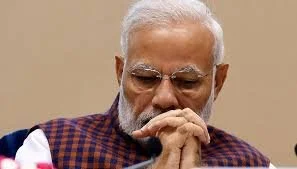Modi’s miscalculated military move — between nationalism and reality
India’s four-day military clash with Pakistan has exposed a chasm between political ambitions and the realities of war
By The Taurean
OPINION, June 5, 2025
ALTHOUGH both India’s ruling coalition and the opposition continue to claim that the country’s armed forces dealt a heavy blow to Pakistan during last month’s brief but intense military clash, significant confusion persists — particularly concerning the major aerial engagement on the morning of 7th May and the abrupt cessation of hostilities by the afternoon of 10th May.
At the heart of this confusion is the stark contrast between what the Indian government intended to achieve and what the Indian public was led to believe. In essence, the Narendra Modi administration wanted to pursue a limited military operation — one designed to project the prime minister’s much-vaunted “56-inch chest” while hoping that the manoeuvre would be minor enough for Pakistan to absorb it without serious retaliation.
However, Islamabad had entirely different plans. Two key factors explain this: first, Pakistan’s hybrid government — already unpopular domestically — was in no position to appear weak; and second, Pakistan has a recent history of robust military responses, as evidenced by its cross-border air strikes in Afghanistan and Iran last year.
Modi and his cabinet clearly underestimated the response likely from Prime Minister Shehbaz Sharif and Chief of Army Staff Gen Asim Munir. This miscalculation led to complications far more serious than anticipated.
This isn’t the only instance of Modi’s government getting caught in the web of its own hyper-nationalist rhetoric. In 2019, after the controversial revocation of Article 370 in Occupied Jammu and Kashmir, the government promised a reduction in militancy and accelerated development in the disputed region. The deadly Pahalgam attack in April — a high-casualty incident in a popular tourist destination — cast serious doubt on those promises.
To deflect attention from what many saw as an intelligence and security lapse so close to the Bihar state elections, the Modi government immediately blamed Pakistan. Some analysts have even suggested the Pahalgam incident may have been a false flag operation designed to justify military escalation in order to fetch more votes. Anyway, New Delhi rejected Islamabad’s offer for an international investigation and instead initiated what is now being termed the four-day clash.
Meanwhile, India’s pro-government media — dubbed the ‘Godi Media’ by critics — went into an overdrive, cultivating a narrative that made full-scale war seem imminent. The atmosphere was further inflamed by television panellists such as Maj Gaurav Arya and Gen G.D. Bakshi, commentators known more for jingoism than for measured military analysis.
This media frenzy gave rise to dangerously unrealistic expectations among the public. Many were led to believe that Pakistan’s financially troubled military would collapse in a matter of days, with both Azad Kashmir and Balochistan expected to fall swiftly under Indian control. The actual outcome was dramatically different.
The Indian Air Force lost up to six aircraft — including the much-celebrated Rafale jets — on the first night of engagement. The public has yet to fully come to terms with these losses, and the government's lack of transparency has only added to the confusion. Officially, the conflict is not over yet — it has merely been paused.
What shocked observers further was the manner in which the ceasefire was declared. It was not announced by either India or Pakistan, but rather by US President Donald Trump. His unexpected intervention baffled analysts and angered many Indians, particularly as Trump placed equal emphasis on both sides. This irked a domestic audience already fuelled by years of nationalist rhetoric and media disinformation.
As the Bihar elections draw closer, Modi has begun appearing in military attire on campaign posters and invoking references to ‘Sindoor’ — a veiled nod to the recent hostilities. His absence from an all-party conference during the clash, juxtaposed with his immediate participation in a campaign rally, has raised further eyebrows.
Opposition parties, including Congress, are aware of the inconsistencies and failures in the government’s actions. However, they remain restrained in their criticism, likely because the conflict is technically ongoing. For now, they are cautiously questioning the rationale and consequences of the government’s so-called military triumph.
